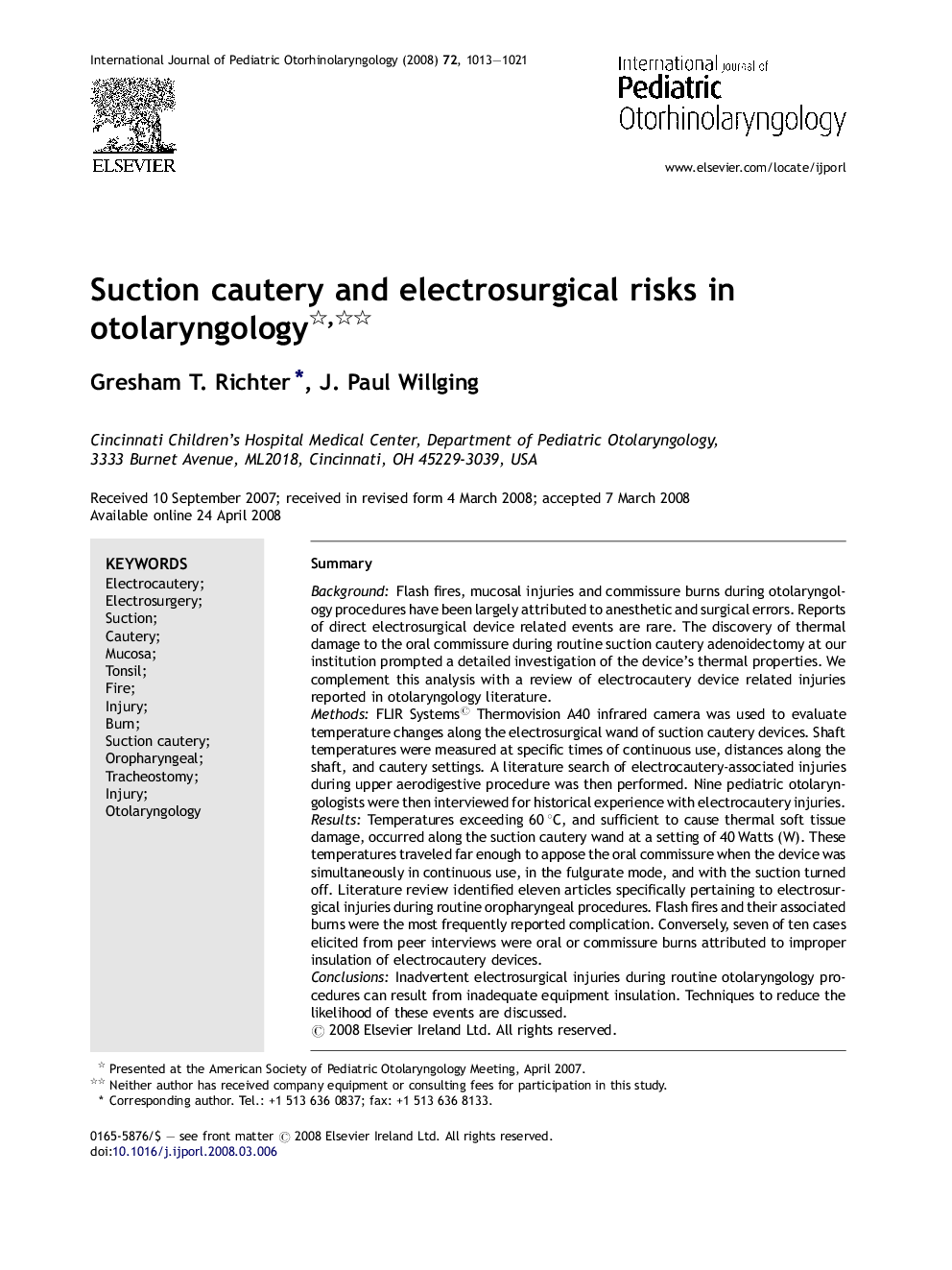| Article ID | Journal | Published Year | Pages | File Type |
|---|---|---|---|---|
| 4115035 | International Journal of Pediatric Otorhinolaryngology | 2008 | 9 Pages |
SummaryBackgroundFlash fires, mucosal injuries and commissure burns during otolaryngology procedures have been largely attributed to anesthetic and surgical errors. Reports of direct electrosurgical device related events are rare. The discovery of thermal damage to the oral commissure during routine suction cautery adenoidectomy at our institution prompted a detailed investigation of the device's thermal properties. We complement this analysis with a review of electrocautery device related injuries reported in otolaryngology literature.MethodsFLIR Systems© Thermovision A40 infrared camera was used to evaluate temperature changes along the electrosurgical wand of suction cautery devices. Shaft temperatures were measured at specific times of continuous use, distances along the shaft, and cautery settings. A literature search of electrocautery-associated injuries during upper aerodigestive procedure was then performed. Nine pediatric otolaryngologists were then interviewed for historical experience with electrocautery injuries.ResultsTemperatures exceeding 60 °C, and sufficient to cause thermal soft tissue damage, occurred along the suction cautery wand at a setting of 40 Watts (W). These temperatures traveled far enough to appose the oral commissure when the device was simultaneously in continuous use, in the fulgurate mode, and with the suction turned off. Literature review identified eleven articles specifically pertaining to electrosurgical injuries during routine oropharyngeal procedures. Flash fires and their associated burns were the most frequently reported complication. Conversely, seven of ten cases elicited from peer interviews were oral or commissure burns attributed to improper insulation of electrocautery devices.ConclusionsInadvertent electrosurgical injuries during routine otolaryngology procedures can result from inadequate equipment insulation. Techniques to reduce the likelihood of these events are discussed.
